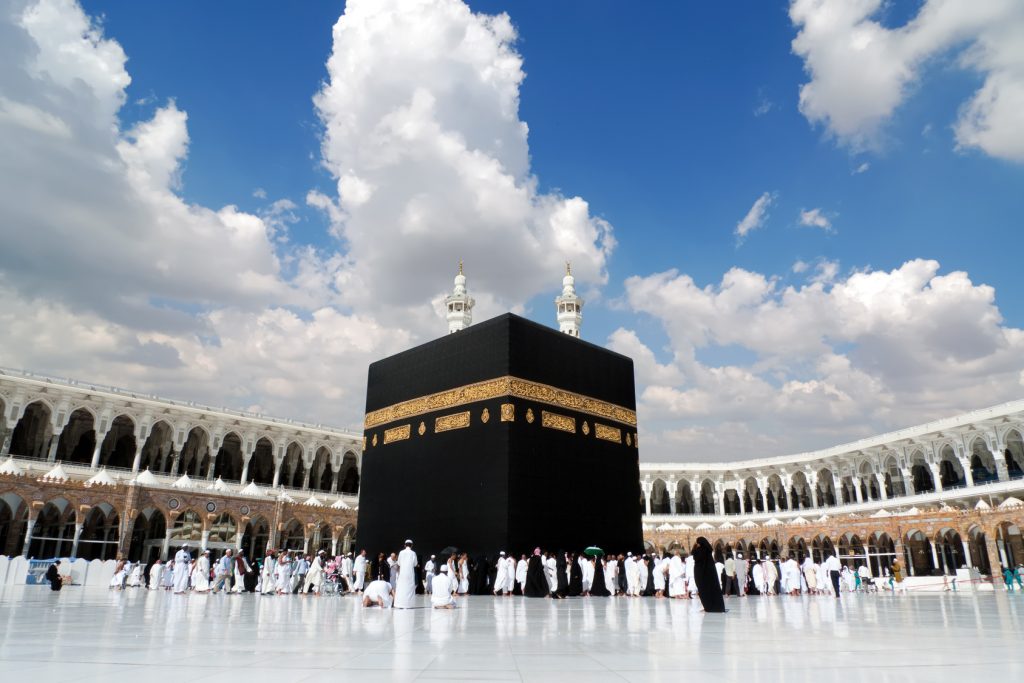Manasik (Arabic: مناسك) is the whole of rites and ceremonies that have to be performed by Islamic pilgrims in and around Mecca. The Qur'an differentiates between two manasiks: The Manasik of Hajj, has to be done in the month Dhu al-Hijjah and The Manasik of ʿUmra, which can be performed any time of the year. The knowledge of manasik is an independent part of Fiqh.
Qur'anic statements
The Arabic term mansak or mansik, to which manāsik forms the plural, is nomen loci to the Arabic word nusuk. The term nusuk occurs even in the Qur'an in Sura 2:196, where it refers to a sacrifice that has to be made as a substitute if the pilgrim prematurely cuts his hair. As a nomen loci, the term mansak thus refers to a place of sacrifice However, it has undergone a change of meaning over time. Even in the Qur'an itself, the term is used for certain sacrificial rites. In this sense, the term already appears in two places in the 22nd Sura named after the Hajj, in verse 34 and verse 67
In addition, the plural term occurs twice in Quran 2 in connection with pilgrimage. In the first passage, Quran 2:128, Abraham addresses the petition to God to show him and his Muslim offspring the rites (manasik). In the second passage, Sura 2:200, believers are called upon to commemorate the manasik of God, as they had inherited thought of their fathers. The term is already used in the Qur'an for the entirety of the pilgrimage ceremonies.
History
One of the earliest experts in manāsik was the Prophet's Companion Abdullah ibn Umar. From him, it is reported that he alternately went one year to Hajj and the other year to 'Umrah.[3] During the pilgrimage season (mausim) he was then active as Mufti.[4] Together with Abd Allah ibn Abbas he delivered his Fatwa - Sessions on the arrival of the pilgrims.[5]
One of the earliest monographic treatises on the entirety of the pilgrimage rites is the Kitāb al-Manāsik of Qatāda ibn Diʿāma [de] (). The first part of this work is preserved in the tradition of his disciple Sa'īd ibn Abī'Arūba ). Later, numerous other Manāsik works were written.
As reported by Christiaan Snouck Hurgronje, who was in Mecca at the end of the 19th century, the Manasik were taught to the pilgrims in their own colleges before the pilgrimage began.[
There are several general guidelines for Umrah and Hajj that must be known by pilgrims when in Medina and Mecca wants to do Hajj or Umrah. Things which may not be applied in the country should be done in the Holy Land such as maintaining courtesy towards other people from many countries. We must do this so that our worship is smooth and fervent.
Hajj and Umrah rituals
- BY
- DATE 11/14/2023


